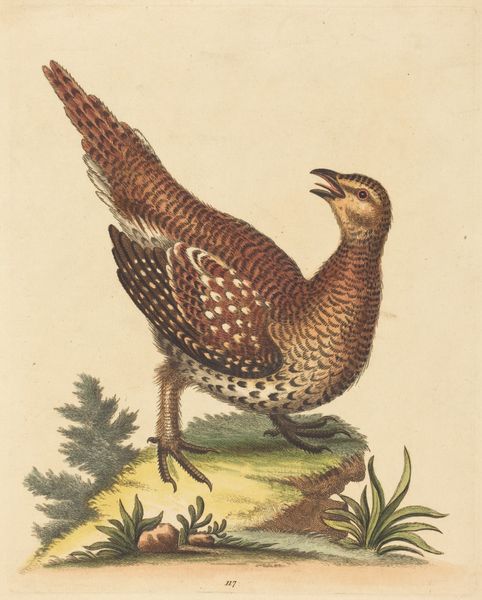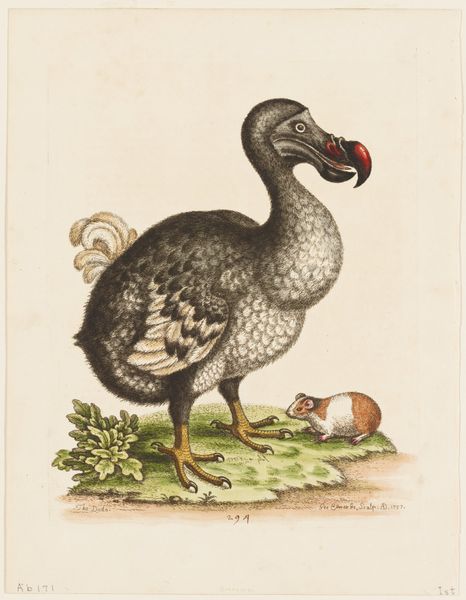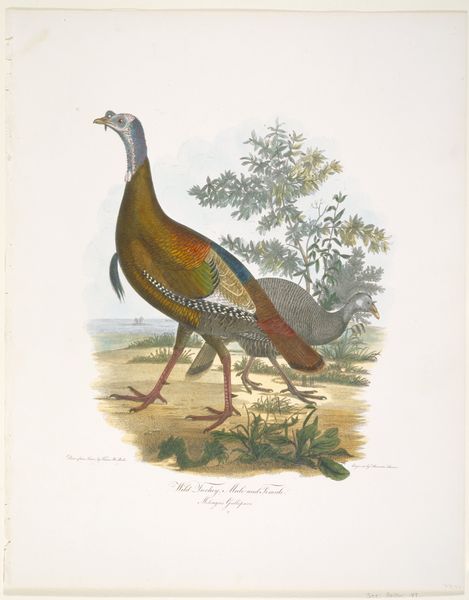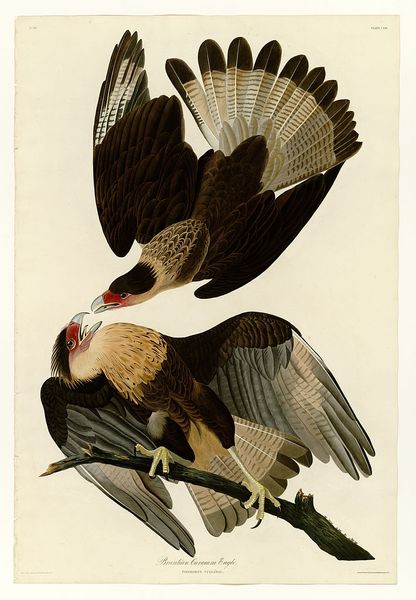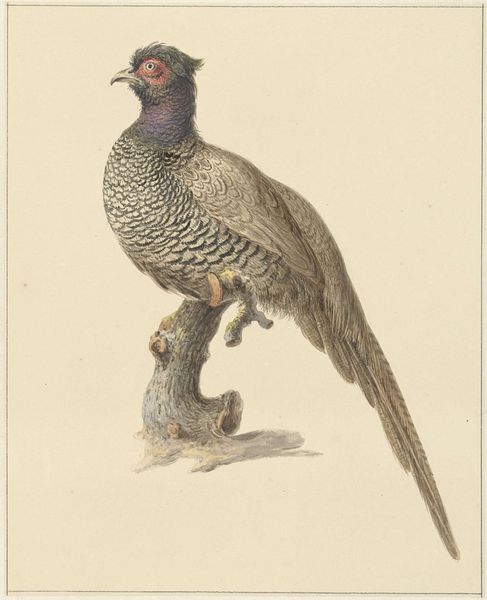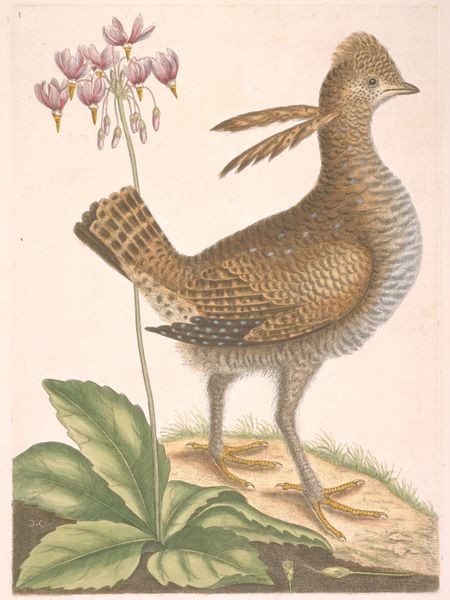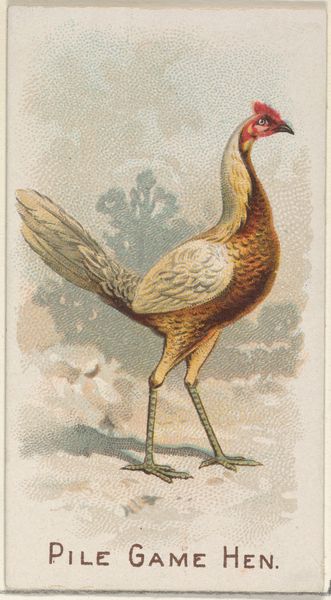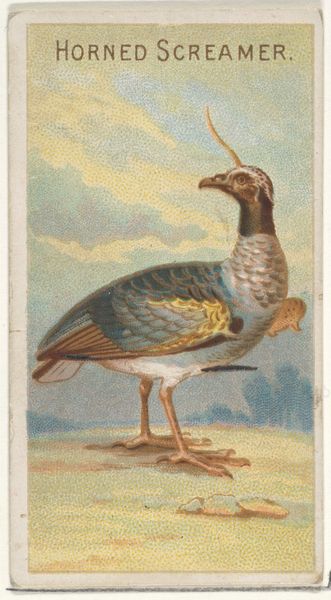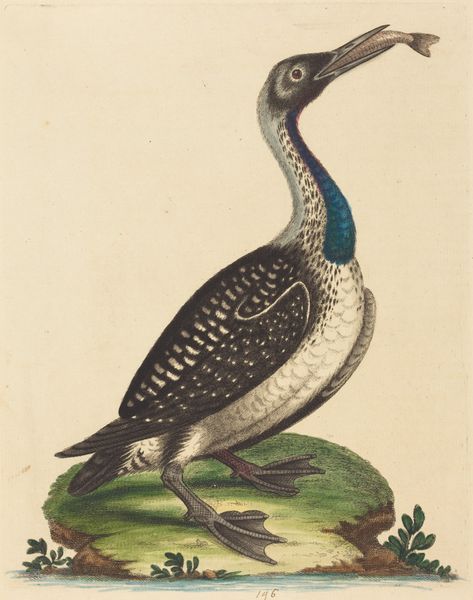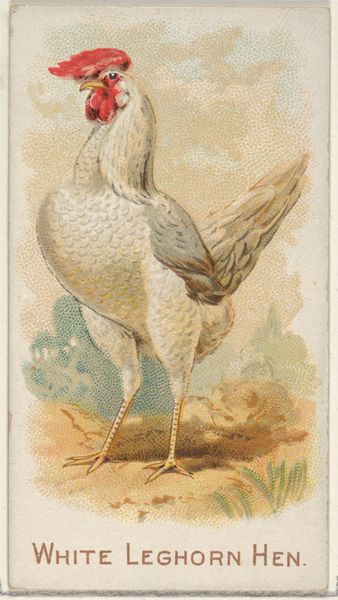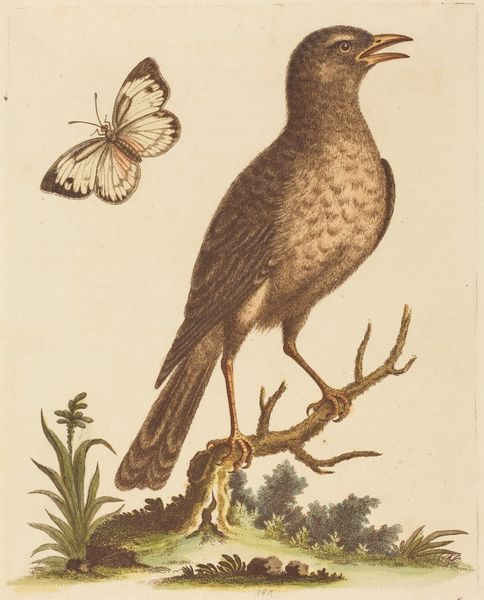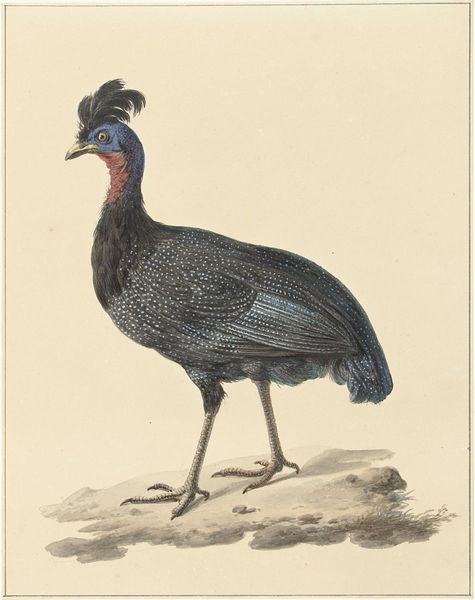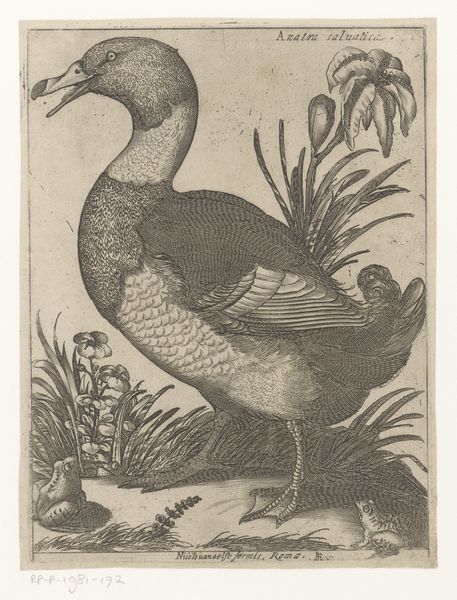
Birds 27. 1. Pinnated Grous. 2. Blue-green Warbler. 3. Nashville W. 1808 - 1814
0:00
0:00
Dimensions: 13 x 10 1/2 in. (33.02 x 26.67 cm) (plate)
Copyright: Public Domain
Curator: Immediately, what strikes me is the stillness. A curated tableau, almost like specimens pinned for display. What's your take? Editor: It's a beautifully observed still life. We are looking at "Birds," created sometime between 1808 and 1814, by Alexander Wilson. The complete title is "Birds 27. 1. Pinnated Grous. 2. Blue-green Warbler. 3. Nashville W." currently held at the Minneapolis Institute of Art. He used watercolor, engraving, and drawing to render the different birds. Curator: Right. Wilson wasn’t just capturing their likeness; he was defining them, immortalizing a specific vision. The "Pinnated Grouse" seems… almost regal in its pose, then contrasted with the two little birds floating up above like afterthoughts. What a peculiar visual language, isn't it? The big bird's breast looks almost inflated or diseased to be honest, although I am sure there's a purpose. Editor: Absolutely. Wilson's ornithological illustrations are fascinating from an iconographic perspective. These birds aren't simply representations of species; they're symbols laden with meaning, reflecting the artist's observations and potentially wider cultural attitudes. Each element holds visual weight that signifies more than the eye might initially see. The breast may signify dominance. Curator: Do you see a thread in this artwork relating to the natural world's changing perception? Back then, these detailed illustrations were key for sharing ornithological knowledge. Nowadays, do they signify a kind of nostalgic reverence for a wild world that’s ever shrinking? I suppose, too, Wilson may not have conceived of a world with as much destruction of species as is apparent now. Editor: Indeed. This brings the cultural and psychological impact. The almost clinical detail with which he renders these birds evokes a sense of loss and a longing for the pristine beauty of nature. What seems quaint in his era is now freighted with contemporary significance. Wilson's illustrations speak to the continuous, if sometimes melancholy, dialogue between ourselves and nature, captured and reframed by culture and art. Curator: Ultimately, gazing at these birds invites a dual awareness. A kind of melancholic contemplation. Editor: Very true. It is a quiet and sobering echo.
Comments
No comments
Be the first to comment and join the conversation on the ultimate creative platform.
